
suran
Elephant foot yam or whitespot giant arum [1][2] or stink lily, amorphophallus paeoniifolius is a tropical tuber crop that offers excellent scope for adoption in the tropical countries as a cash crop due to its production potential and popularity as a vegetable in various delicious cuisines.
...more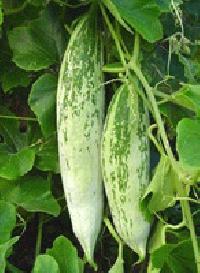
Snake Gourd
We offer snake gourd. The narrow, soft-skinned fruit can reach 150 cm long. Its soft, bland, somewhat mucilaginous flesh is similar to that of the luffa and the calabash. It is most popular in the cuisine of south asia and southeast asia. The shoots, tendrils, and leaves are also eaten
...more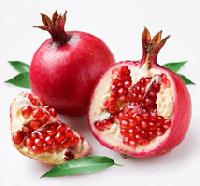
Pomegranate
A pomegranate is a fruit-bearing deciduous shrub or small tree growing to between five and eight meters tall. The pomegranate is native to the iranian plateau, and has been cultivated in the caucasus since ancient times. It is widely cultivated throughout armenia, azerbaijan, iran, afghanistan, pakistan, turkey, north india, the drier parts of southeast asia.
...more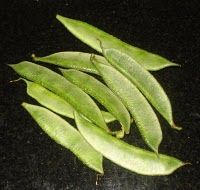
vicia faba
We offer papdi. Vicia faba, the broad bean, fava bean, faba bean, field bean, bell bean or tic bean is a species of bean (fabaceae) native to north africa and southwest asia, and extensively cultivated elsewhere.
Country of Origin : India
Type : Broad Bean
Feature : High In Protein, Good For Health
Packaging Size : 5 Kg
Cultivation Type : Seed
Shelf Life : 1 Week
...more
Snake Gourd
We offer lime. The lemon is a small evergreen tree (citrus limon) originally native to asia, and is also the name of the tree's oval yellow fruit. The fruit is used for culinary and nonculinary purposes throughout the world – primarily for its juice, though the pulp and rind (zest) are also used, mainly in cooking and baking. Lemon juice is about 5% (approximately 0.3 mole per litre) citric acid, which gives lemons a sour taste, and a ph of 2 to 3. This makes lemon juice an inexpensive, readily available acid for use in educational science experiments. Because of the sour flavor, many lemon-flavored drinks and candies are available, including lemonade.
...more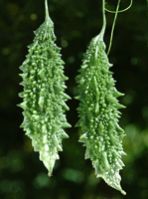
Karela
Momordica charantia is a tropical and subtropical vine of the family cucurbitaceae, widely grown for edible fruit, which is among the most bitter of all fruits. English names for the plant and its fruit include bitter melon or bitter gourd (translated from chinese: 苦瓜; pinyin: kǔguā), and goya from japanese).
...more
Indian Gooseberry
We are offering indian gooseberry. The tree is small to medium sized, reaching 8 to 18 m in height, with a crooked trunk and spreading branches. The branchlets are glabrous or finely pubescent, 10–20 cm long, usually deciduous; the leaves simple, subsessile and closely set along branchlets, light green, resembling pinnate leaves. The flowers are greenish-yellow. The fruit is nearly spherical, light greenish yellow, quite smooth and hard on appearance, with 6 vertical stripes or furrows. Ripening in autumn, the berries are harvested by hand after climbing to upper branches bearing the fruits. The taste of indian gooseberry is sour, bitter and astringent, and is quite fibrous.
...more
Guar Bean
The guar bean or cluster bean (Cyamopsis tetragonolobus) is an annual legume and the source of guar gum. It grows best under conditions with frequent rainfall, but tolerates arid conditions well.[1] 80% of world production occurs in India, but, due to strong demand, the plant is being introduced into new areas. It is known as Gawaar in Hindi and Marathi, Gorikayie in Kannada, and kotthavarai (கொத்தவரைக்காய்) in Tamil.
...more
Drumstick
Drumstick tree" and variants thereof redirect here. This name is also used for the golden shower tree (cassia fistulosa). Moringa oleifera, commonly referred to simply as "moringa" (from tamil: muringa and malayalam: murunggi[1]), is the most widely cultivated species of the genus moringa, which is the only genus in the family moringaceae. It is an exceptionally nutritious vegetable tree with a variety of potential uses. The tree itself is rather slender, with drooping branches that grow to approximately 10 m in height. In cultivation, it is often cut back annually to 1 meter or less and allowed to regrow so that pods and leaves remain within arm's reach.
...more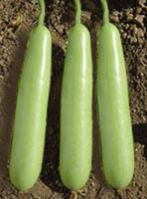
DOODI
The calabash or bottle gourd (not to be confused with the calabaza) is a vine grown for its fruit, which can either be harvested young and used as a vegetable or harvested mature, dried, and used as a bottle, utensil, or pipe. For this reason, one of the calabash subspecies is known as the bottle gourd. The fresh fruit has a light green smooth skin and a white flesh. However the rounder varieties are called Calabash gourds whereas the longer and slimmer kinds are usually well known as bottle gourds.
...more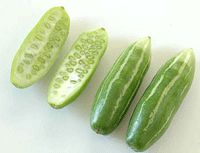
DONDA TENDULI
Coccinia grandis native range includes: africa and asia; india, philippines, china, indonesia, malaysia, thailand, vietnam, eastern papua new guinea, northern territories (australia) (pier, 2003). It documented introduced range includes: federated states of micronesia, fiji, guam, hawai‘i, marshall islands, samoa, tonga, vanuatu (pier, 2003).
...more
Custard Apple
We are offering custard apple. The custard-apple, also called bullock's heart or bull's heart, is the fruit of the tree annona reticulata. This tree is a small deciduous or semi-evergreen tree sometimes reaching 10 metres (33 ft) tall and a native of the tropical new world that prefers low elevations, and a warm, humid climate. It also occurs as feral populations in many parts of the world including southeast asia, taiwan, india, australia, and africa.
...more
Curry Leaves
We are offering curry leaves. Curry leaves or sweet neem leaves. Karivepillai in tamil means black neem as the appearance of the leaves look similar to the neem leaves. It is a small tree, growing 4-6 m tall, with a trunk up to 40 cm diameter. The leaves are pinnate, with 11-21 leaflets, each leaflet 2-4 cm long and 1-2 cm broad. They are highly aromatic. The flowers are small white, and fragrant. The small black, shiny berries are edible, but their seeds are poisonous.
...more
Chilli
we are offering chilli. chili pepper (from nahuatl chilli), also known as, or spelled, chilli pepper, chilli, chillie, chili, and chile, is the fruit[1] of the plants from the genus capsicum, members of the nightshade family, solanaceae. although botanically speaking, the fruit of capsicums are berries, the peppers are considered as vegetables or spices for culinary purposes. depending on flavor intensity and fleshiness, their culinary use varies from use as a vegetable (e.g., bell pepper) to use as a spice (e.g., cayenne pepper). chili peppers originated in the americas. their cultivars are now grown around the world, because they are widely used as food and as medicine.
...more
Chickoo
Sapodilla (manilkara achras [mill. (fosberg)]) is a long-lived, evergreen tree native to southern mexico, central america and the west indies.[1] it is grown in huge quantities in india, mexico and was introduced to the philippines during spanish colonisation.
...more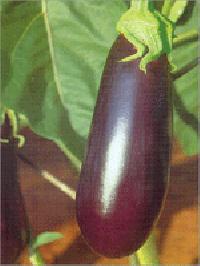
Brinjal
The eggplant, aubergine, begun, or brinjal, or baygan (solanum melongena), is a plant of the family solanaceae (also known as the nightshades) and genus solanum. It bears a fruit of the same name, commonly used as a vegetable in cooking. As a nightshade, it is closely related to the tomato and potato and is native to india, bangladesh, pakistan, and sri lanka.
...more
Bhindi
The species is an annual or perennial, growing to 2 m tall. The leaves are 10 ti 20 cm long and broad, palmately lobed with 5 to 7 lobes. The flowers are 4 to 8 cm diameter, with five white to yellow petals, often with a red or purple spot at the base of each petal. The fruit is a capsule up to 18 cm long, containing numerous seeds.
...more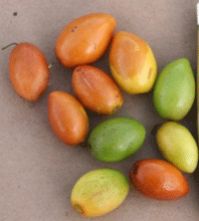
Ber
Ziziphus mauritiana (Ber, Boroi, Indian Jujube, Chinese Apple or Cottony Jujube) is a tropical fruit tree species, belonging to the family Rhamnaceae. It is native to southern Asia (mainly India) though it is also cultivated and naturalised elsewhere in the dry tropics, notably in Africa.
...more
Arvi
They are herbaceous perennial plants with a large rhizome on or just below the ground surface. The leaves are large to very large, 20-150 cm long, with a sagittate shape. The elephant's-ear plant gets its name from the leaves, which are shaped like a large ear or shield.
...moreBe first to Rate
Rate ThisOpening Hours